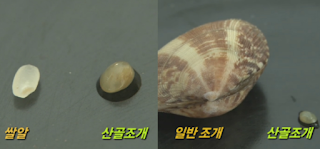Unearthing Ecological Marvels: Rare Clam Species Rediscovered in Hallasan
In a groundbreaking discovery, researchers in Hallasan, Jeju, have unearthed a treasure trove of biodiversity, reaffirming the volcanic wonder's status as a haven for diverse life. The study, a collaborative effort involving experts from the Hallasan Research Division, the World Heritage Center, the Biodiversity Research Institute, the Korea Freshwater Fish Conservation Association, and the Korea Cave Biology Research Institute, spanned seven months from April.
The revelation includes the identification of 19 mollusk species, two freshwater fish species, and a staggering 134 arachnid species thriving in Hallasan. Particularly intriguing are the two newly reported arachnid species, the long-lived salt-sac arachnid and the saucer arachnid, bringing a fresh perspective to the region's biodiversity.
However, questions remain about the origin of certain freshwater fish species, like the mudfish, prompting further investigation into their natural occurrence or possible transplantation.
Historically, Hallasan's resource survey focused on plants and excluded fish, mollusks, and arachnids due to the volcanic soil's efficient drainage. Yet, the recent findings emphasize Hallasan's ecological richness, challenging previous assumptions.
The spotlight of this discovery falls on the sangol clam, a member of the sangol family, thought to be extinct for a century. Last recorded by Japanese scientist Kuroda in 1908, the sangol clam's presence adds a rare and remarkable dimension to Hallasan's ecological narrative. The 6.6-millimeter triangular mountain oyster clam, considered extinct until now, has made a surprising reappearance in Hallasan's pristine areas.
This rediscovery underscores the importance of preserving and understanding ecosystems, especially in unique environments like Hallasan, where nature continues to surprise us even after a century.
FAQ Additions: Q: What were the key findings of the research in Hallasan? A: The study revealed the presence of 19 mollusk species, two freshwater fish species, and 134 arachnid species, including two previously unreported arachnid species.
Q: Why were certain areas excluded from previous Hallasan resource surveys? A: Historically, fish, mollusks, and arachnids were excluded from surveys due to Hallasan's well-draining volcanic soil, leading to the assumption that water retention was limited.
#HallasanDiscovery, #BiodiversityTreasure, #NatureRevival, #EcologicalMarvels, #SangolClamRediscovery

